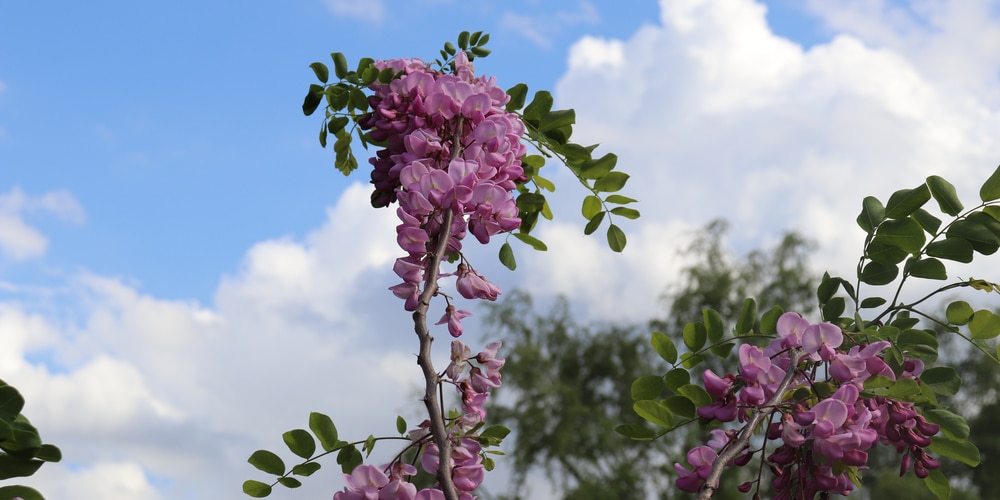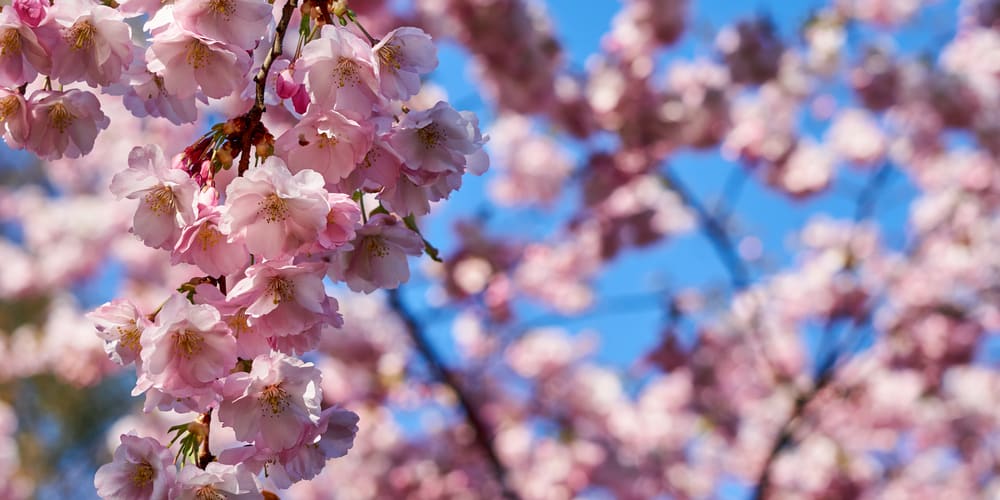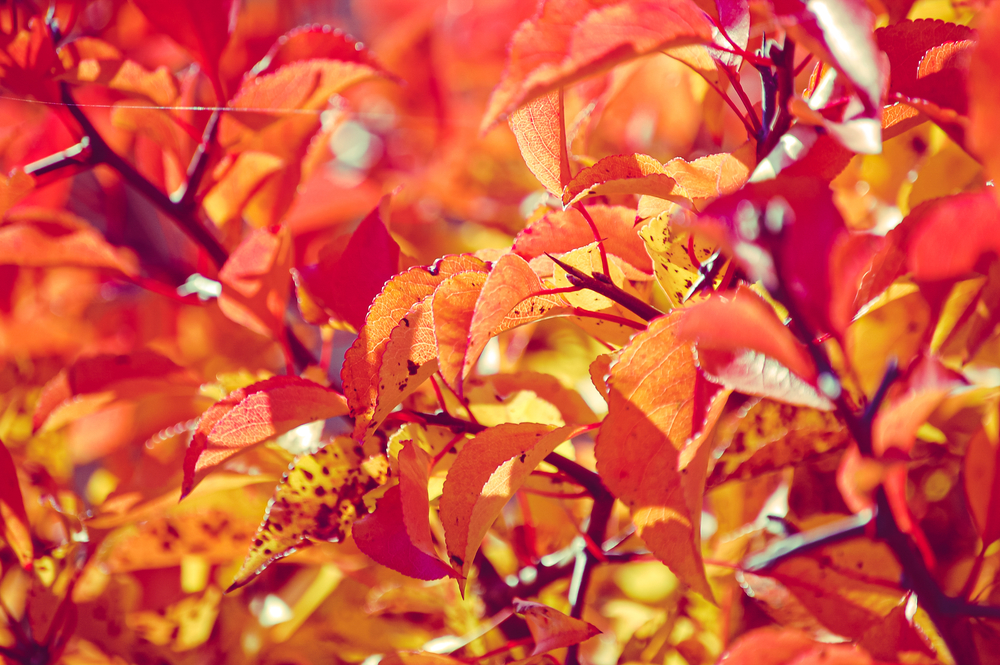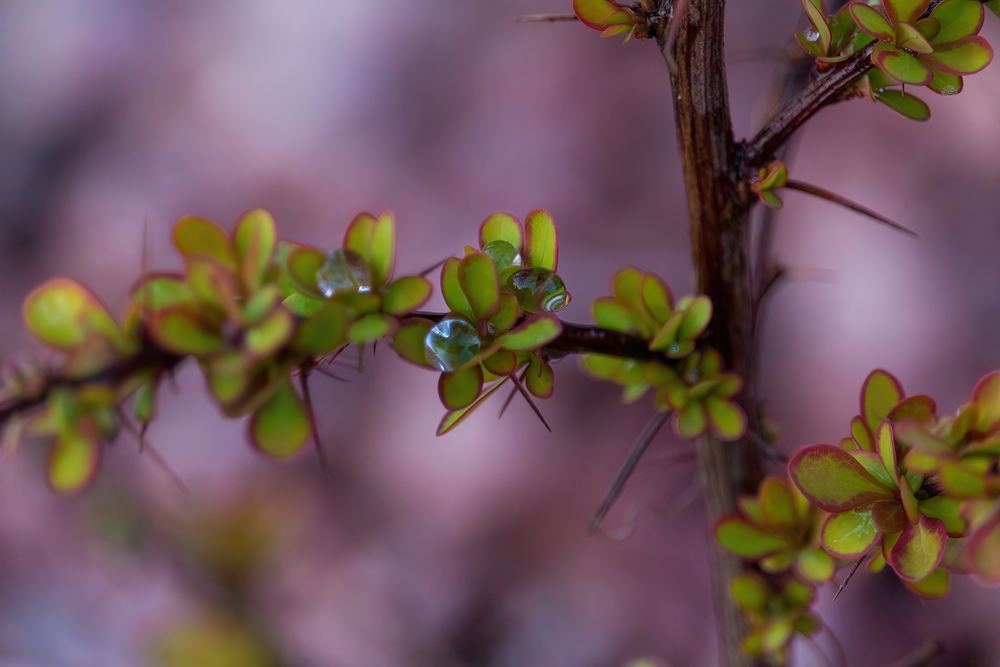In the beautiful state of Idaho, there is any number of gorgeous trees that may catch your eye as you cruise across a verdant, mountainous landscape. Particularly in spring, when life returns to the hills and valleys, there is no shortage of flowering trees in Idaho.
Flowering Trees in Idaho
This is a list of flowering trees present in Idaho. If you live in the gem state and are curious about your local flora, look no further.
1. Purple Robe Locust Tree (Robinia pseudoacadia)
A drought-resistant hardwood tree that can be found in Idaho, the Purple Robe Locust tree is fast-growing and refreshingly aromatic. Because of this, it has become a popular purchase among plant-lovers. Within a few years, your tree will be flourishing. The Purple Robe Locust tree shoots up around 2-3 feet per year and its flowers bloom a deep purple, clustering together akin to Wisteria trees.
Its fragrance is incomparable. Many people use its blossoms for scented centerpieces or potpourri!
2. Yoshino Cherry Tree (Prunus yedoensis)
A part of the Japanese Cherry Blossom lineage, its springtime buds can be seen throughout Treasure Valley west of Boise, stretching into Oregon. Though not indigenous to the Pacific Northwest, it has long since established its presence there. It can reach up to 50 feet in height, thriving even in during dry spells.
In order to establish it, a lot of deep watering in the initial month of planting is required, but once the tree has taken root? It is only essential you care for it during droughts. At peak maturity, it has a natural spread of approximately 25 feet.
3. Native American Plum (Prunus americana)
This deciduous, single-trunk tree (sometimes referred to as a shrub) is native to North America and can be found just about everywhere. From the northern reaches of Saskatchewan to the desert landscape of New Mexico and into the harbors of Maine, its range is rather impressive. Thought of as a woodland species, it grows best alongside other hardwood trees in forested environments.
This tree bears fruit, so if you are starting from scratch, you can expect the first signs of growth anywhere between two to four years after having established itself in your garden.
4. Audubon® Washington Hawthorn (Crataegus phaenopyrum)
The Washington Hawthorn is a deciduous, woody tree found in the temperate region of the Pacific Northwest, including Idaho. However, it is at home in most soils and thus has a range comparable to that of the American Plum. Unlike the plum, most hawthorns are not quite as hardy to the cold and so are not flourishing in places such as Saskatchewan and Manitoba.
It is dense and lush and requires full sun exposure. However, its growth rate (medium) may be dissatisfactory for those just venturing into gardening. Its fruit is safe to consume for birds and humans alike, although it takes a handful of years to bear in comparison to plum trees.
5. Helmond Pillar Barberry (Berberis thunbergii)
Among barberries, the Helmond Pillar Barberry stands out for its unique structural growth and vibrant yellow flowers that bloom in the spring. Slender when mature, and quite tall, it spreads vertically like a Roman-style column, earning it the mantle of “Pillar Barberry.”
Quite decorative, in the spring it alights the world with yellow blossoms that transform into red berries by autumn. In addition, its foliage is tinted purple, making it one of the more aesthetically-pleasing ornamental plants. It is fantastic for Halloween wreaths!
Honorable Mentions
- Lavender Chiffon Rose of Sharon (Hibiscus syriacus)
- Imperial Honey Locust (Gleditsia triacanthos)
- Autumn Blaze Maple (Acer freemanii)
- Canada Red Chokecherry (Prunus virginiana)
- River Birch (Betula nigra)
You may also be interested in finding out more about trees that have red leaves all year round. Planting trees with red foliage is another great way to add color to your yard.




